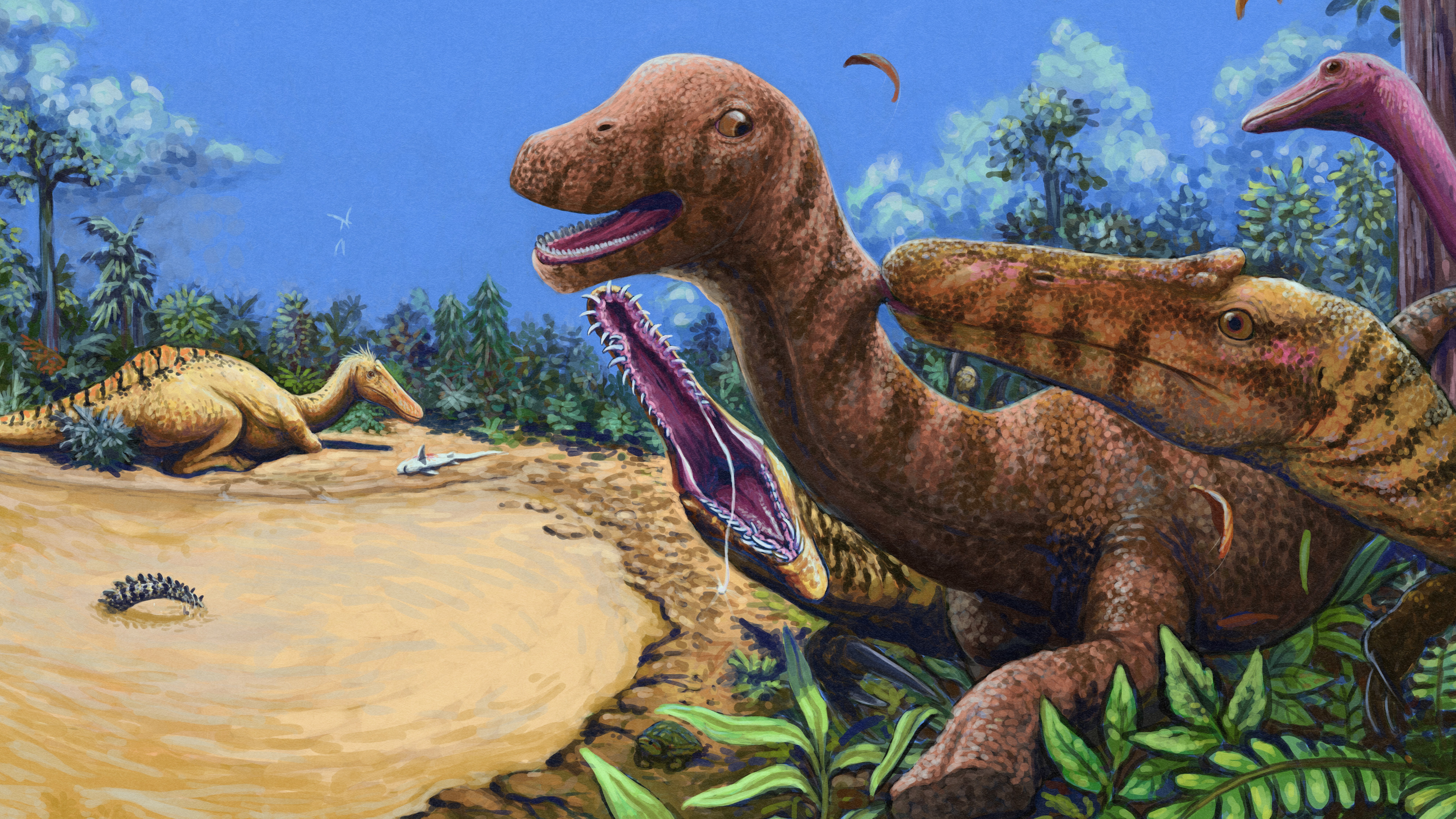Why Does a Mother's Body Keep Some of Her Baby's Cells After Birth?

Having a child changes a woman. It turns her into a mother … but also into a kind of chimera.
This transformation doesn't result in a part-lion, part-goat fire-breathing monster of Greek mythology. But it does result in another type of chimera — one defined by the presence of cells in the body that come from at least two organisms. That's because the mother may live the rest of her life with cells in her body that are not her own, but her baby's.
During pregnancy, some of the fetus's cells leave the womb, traveling through the placenta and into the mother's bloodstream, where they end up in various parts of her body. [Top 12 Warrior Moms in History]
This phenomenon, later coined as "fetal microchimerism," was first discovered in the late 19th century by a German scientist named Georg Schmorl. A century later, interest in the phenomenon re-emerged, when scientists realized that fetal microchimerism could explain how Y chromosomes — only passed down from father to son — sometimes ended up in women's cells.
The swift journey from fetus to mother
It's not surprising that cells can be easily exchanged between mother and fetus, said Amy Boddy, a biologist at the University of California, Santa Barbara. That's because humans have one of the most invasive placenta types among mammals — one that rearranges arteries so that there is direct blood flow between the mother and the fetus.
This cell exchange starts about six weeks into a pregnancy and continues for the duration, Boddy told Live Science.
Studies have found that these fetal cells can essentially travel to anywhere in the body. In a 2015 study, researchers found cells that contained Y chromosomes in the brains, hearts, kidneys, lungs, spleens and livers of 26 women who died within one month after pregnancy (all were carrying male babies).
Get the world’s most fascinating discoveries delivered straight to your inbox.
The fact that they can be found in so many different tissue types indicates that they're probably stem cells, or cells that can differentiate into any type of cell, she said. (Indeed, the fetal cells also carry markers on their surfaces that are typical of stem cells, she added.)
The mother's body kills off most of these circulating fetal cells shortly after birth. But some evade the immune system and can stay for long periods of time in the mother's body — in some cases, even a lifetime, she said.
"If [the cells were] integrated into tissue … they can be around for a lifetime," Boddy said. For example, a 2012 study found Y chromosomes in 63 percent of the brains of 59 women — the oldest of whom was 94. That means these weren't women who just gave birth.
Why does microchimerism exist?
Knowing how the fetal cells get into the mother's tissues is one thing. But why so many manage to stick around still raises questions.
"We don't know why the ones that stay, stay," Boddy said. But the fact that they do stay suggests that there could be an adaptive explanation for it. Perhaps "these fetal cells might be beneficial, or at least not so harmful," to the mother, she said.
One hypothesis that answers the question of why the cells stick around is "that they can maybe even benefit the [baby]; that they can help the mother provide resources to the [baby] after birth," she said. The idea is that perhaps the cells could hijack and increase levels of maternal hormones for important post-birth processes including lactation, Boddy said. (She and her team are currently researching these hypotheses.)
Other research, however, has shown that the fetal cells may possibly harm mothers. For example, a few autoimmune or cancer studies have found more fetal cells in diseased tissues than in nondiseased tissues, Boddy said. But scientists aren't sure if these cells are just there as bystanders because there's increased blood flow to the area, or if they're actually harmful, she added. A third possibility is that they're trying to help repair the tissue.
"There's so much to study," Boddy said.
It's clear that there's a special bond between mother and child, and it's powerful — but how powerful? We just don't know.
Originally published on Live Science.

Yasemin is a staff writer at Live Science, covering health, neuroscience and biology. Her work has appeared in Scientific American, Science and the San Jose Mercury News. She has a bachelor's degree in biomedical engineering from the University of Connecticut and a graduate certificate in science communication from the University of California, Santa Cruz.


